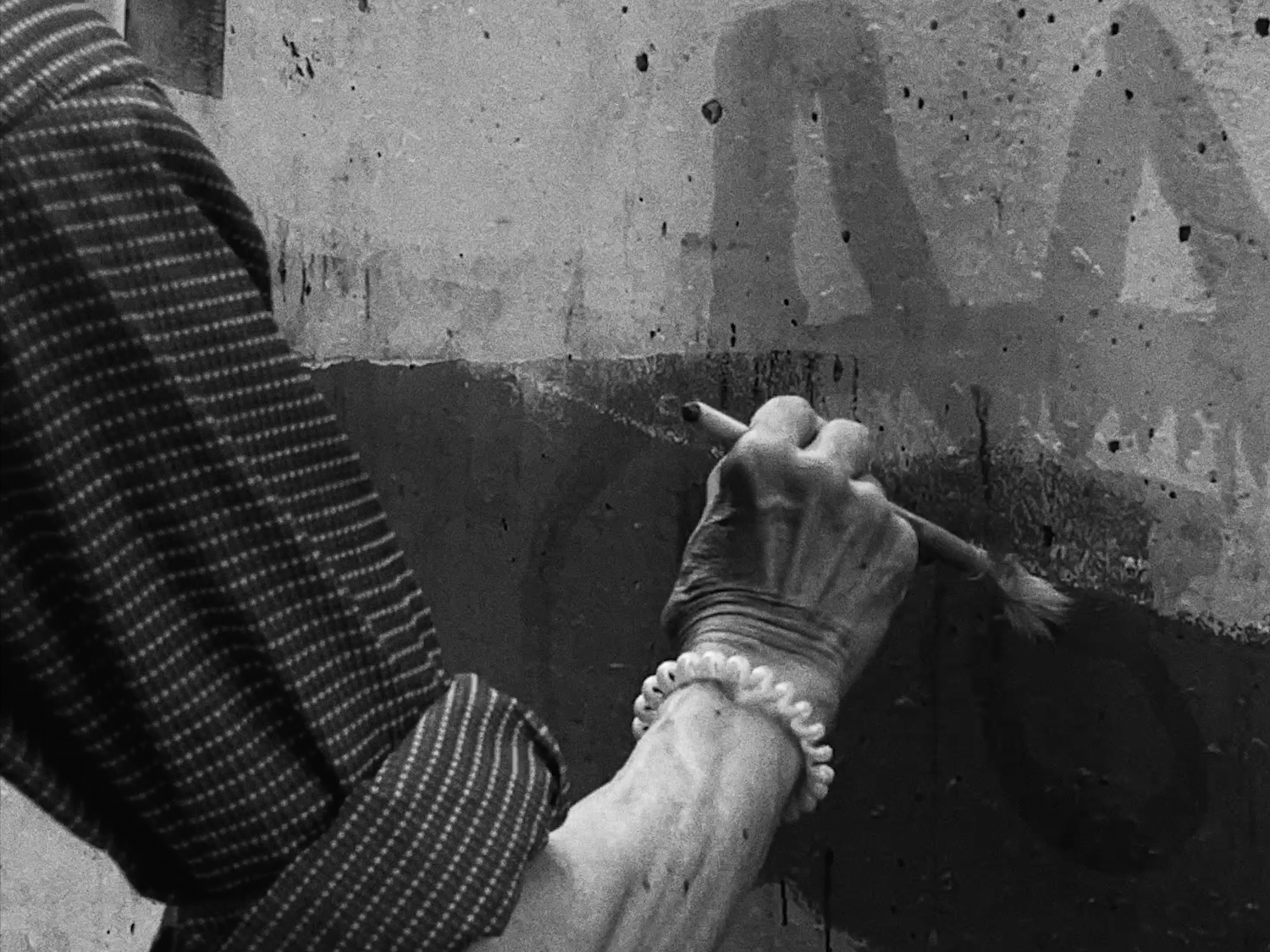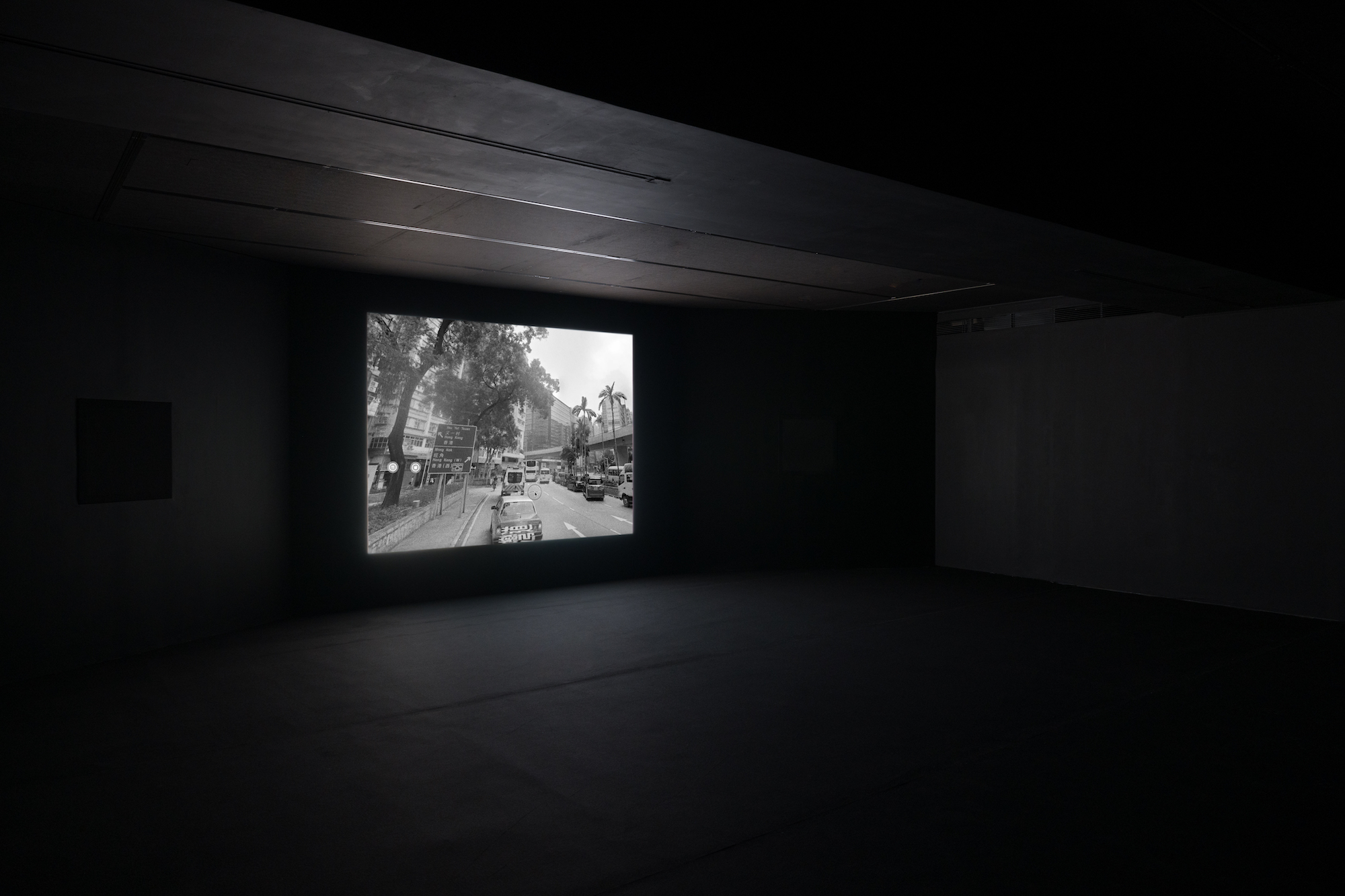距離
奇斯洛夫斯基(Krzysztof Kieślowski)曾說過:「紀錄片先天有一道難以逾越的限制。在真實生活中,人們不會讓你拍到他們的眼淚,他們想哭的時候會把門關上」。這種限制或許貫穿於陳巧真的舊作以及最新的作品《記憶座標》,該新作曾在Empty Gallery首次展出。雖然她的背景及創作經常被放在紀錄片類別下討論,但要理解陳巧真的作品似乎更應該解構紀錄片這個類別本身。影片並非以任何穩定的方式「紀錄」,而是不斷地拆解「紀錄影像」本身,拒絕讓畫面/影像成為唯一的意義。
《記憶座標》圍繞著一系列寄給 C.R.(一位被囚禁、始終沒有回信的朋友)的信發生。觀眾聽到的只有陳巧真的思緒、提問與回憶。C.R. 的沉默不是需要被填補的空白,而是一種塑造作品的力量。鏡頭帶領我們經過的地點似乎被掏空了座標。鏡頭凝視、等待,然後退後。這不是冷漠的距離,而是一種結構性的距離。當畫面靠近時,它只是提醒我們:靠近並不保證理解,而不確定性並非缺陷,而是一種形式的原則。
未見之物
自 1990 年代以來,有關香港文化的書寫中,「消失」一直被塑造成一個重要的概念——城市被描述為正在消逝,懸浮於身份之間,永遠處於「中間」狀態。然而,《記憶座標》某程度上是這種說法的反面。它凝視的不是已經消逝的,而是那些仍在邊緣逗留的:介乎可見與不可見、說不出口的話語和尚未完成的事物之間。
拒絕紀錄的可見性正是陳巧真的影像語言。她的鏡頭較少在「展示」,而更著重「返回」;它們並不提供資訊,卻悄然、幾乎不可察地重新喚起集體記憶。對不熟悉香港的人而言,這些街道與表面或許只是偶然普通的影像;但對經歷過一些近年社會事件的香港人而言,這些影像的共鳴遠超過它們所呈現的內容。影像不再與其「現場」緊密相連,而是指向洪席耶(Jacques Rancière)所說的「場外」(off-site)——一個可見性與記憶交錯的地帶。在這裡,「看」不再是辨認,而是追憶。
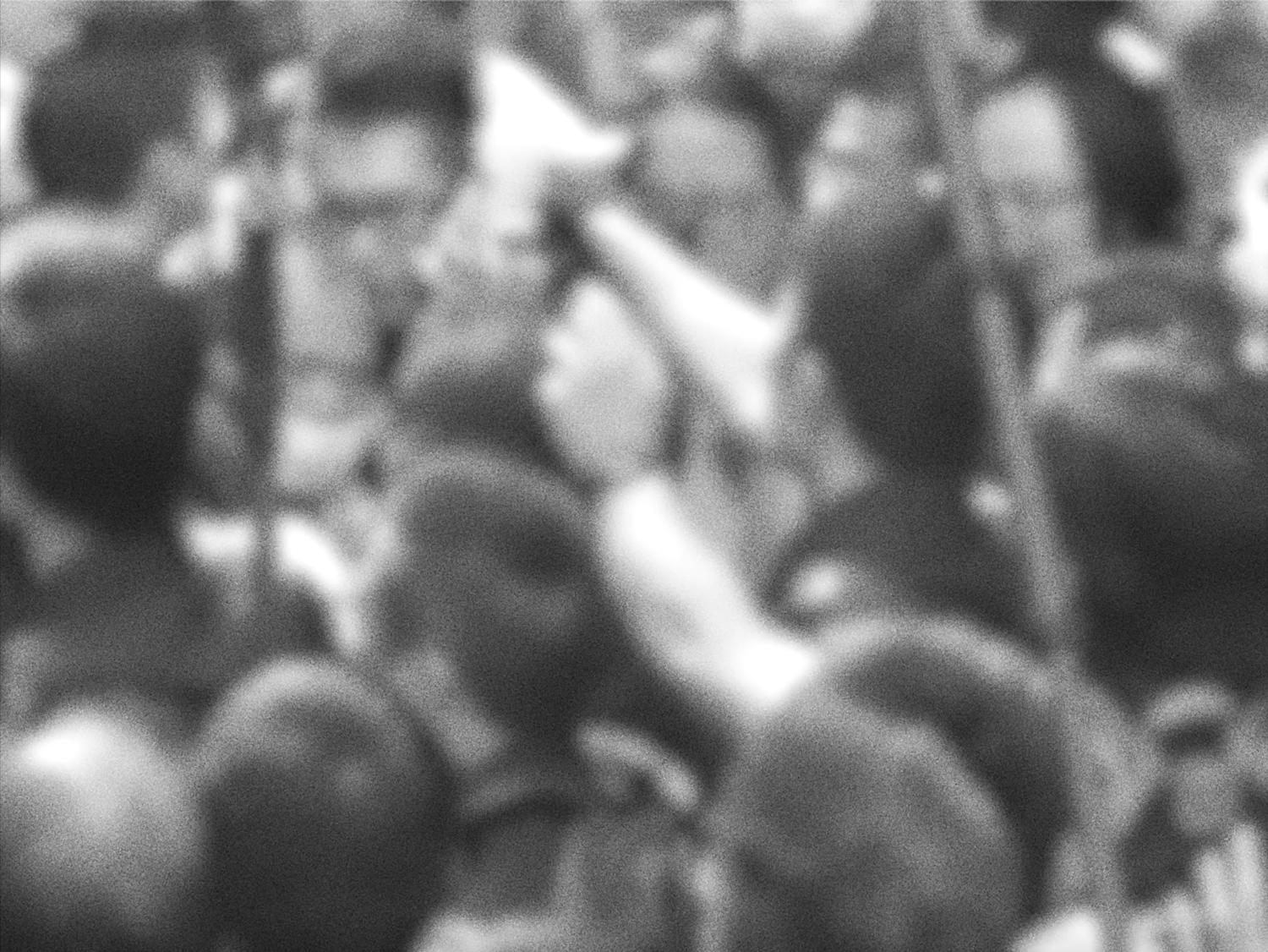
如果傳統紀錄片強調見證一種「在場」(主題、地點、事件),那麼《記憶座標》則將目光投向「不在場」的殘餘之物。看到的並不只是改變了的事物,還有那些異質空間的事物:一個情感、政治與集體的「場外」空間。洪席耶的「感性配享」(distribution of the sensible)概念在此或許有助我們去理解,不可將陳巧真定性為說教式或對抗性的創作者,要理解她的介入是在重新編排可見性的秩序。出現在畫面中的不是新的真理,是某種早已被知曉、卻脆弱得難以言說的事物。
影片中最令人難忘的片段之一,是一名男子以水作畫,他的塗鴉不會留下任何持久的痕跡,甚至可能只有他自己能看見。這是一個並非為觀眾而作的行為,短暫且親密。但它的出現,正暗示了陳巧真創作方法的核心:關注那些在既有意義體系中無法被展示的持續性。它不在表演,而是在記憶。
Google 街景在藝術上常被理解為與監控與空間標準化相關的技術,在這裡它不再具政治性的功能(雖然背後的對話可能源自一些政治性的事)。它帶我們回到一個被時間與個人記憶改變過的地方。街景成為一種主觀漂移的容器——不是激進的行動,而是一種安靜的轉向,看似隨意,卻絕非偶然。
這部影片並沒有追求有形的事物。它描繪出一個空間,在這裡,自身乃透過非個人化的手段浮現:平靜而模糊的鏡頭、若隱若現的塗鴉、不期待回覆的信件。政治性是無形,由那些脫離出框架的事物所構成。
沉默
如果說這部影片有一個貫徹始終的形式,那便是對沉默的處理——不僅是聲音的缺席,還有一種對不能或不該說出口之事的堅持。寫給 C.R. 的信始終沒有回覆,信與信之間的空隙和述說它們的聲音同樣重要。鏡頭觀察而不下結論。
蘇珊・桑塔格(Susan Sontag)在論及布烈遜(Robert Bresson)的《聖女貞德受難記》(The Trial of Joan of Arc, 1962)時,將布烈遜的嚴峻形式主義與德萊葉(Carl Theodor Dreyer)在《聖女貞德》(The Passion of Joan of Arc, 1928)中的情感表達做了對比。對桑塔格而言,布烈遜的沉默不是靜止,而是一種倫理——它避免戲劇化,以此保留苦難的尊嚴。陳巧真的作品或許承繼了這種節制:沉默並非空白,而是承認語言的侷限,拒絕將痛苦轉化為敘事。
這並不是說陳巧真完全遵循布烈遜的冷峻。在《記憶座標》中也有更溫柔、跳躍甚至脆弱的時刻,但倫理上的邏輯是相通的。在這個脈絡下,意義不是被提煉出來的訊息,而是一種被感知到的在場。
她沒有重構 C.R. 的聲音,沒有重演,也沒有想像性的補足。我們聽見與看見的,只是一段破裂對話中的單一一方。而這種不完整,正是影片的形式主義。選擇讓對話保持開放、拒絕結論,這是一種結構與倫理上的決定。這部作品並不以常規的方式地哀悼,它陪伴,它等待。
「他們只看見可見的,卻誤以為那就是全部。」
——《馬太福音》23 章
陳巧真影像的全貌卻是不可見的。它們暗示,看見並不必然意味著理解,而那些位於可見之外的事物,或許比直白的陳述更為長久。信件、模糊的特寫、半被抹去的塗鴉——這些都顯示出她對未解決事件的堅定。
《記憶座標》不提供啟示,不立下主張。它追隨的是記憶、溝通與關懷,並在此過程中建構了一幅脆弱而非線性的地圖。沒有任何東西在這裡被固定。然而,在這些漂移的輪廓之中,影片溫柔地、無聲地、沒有任何奇觀地堅持:並非所有值得見證的事物都會被看見。
本文是對Empty Gallery個展《陳巧真:記憶座標》的評論寫作,展覽日期為2025年6月7日至2025年8月30日。
作者:謝傲俊是一位香港出身、定居倫敦的藝術家、策展人及寫作者。他尤其關注解殖的歷史觀及魂在論,以及技術圖像與技術的哲學。他曾於英國及香港的不同機構擔任策展及研究工作。
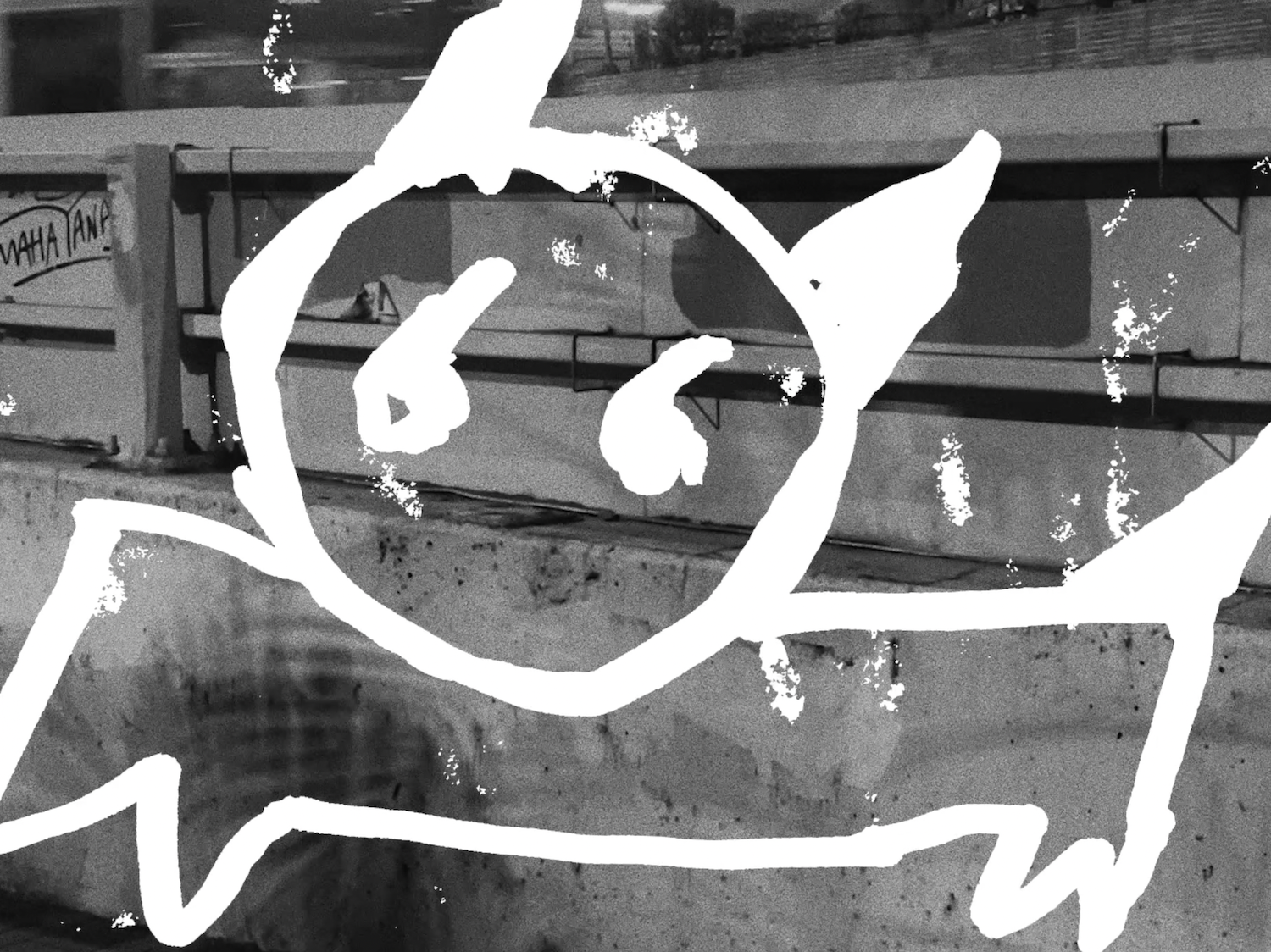
You are Still Here, Even When You are Not
The Paradox of Proximity
Krzysztof Kieślowski once mentioned that “the closer the camera gets to its human object, the more that human object seems to disappear before the camera.” It’s a paradox that informs Chan Hau Chun’s Map of Traces, her latest film at Empty Gallery. Though frequently discussed in relation to documentary practices, Chan Hau Chun’s work appears more interested in the breakdown of that category. The film doesn’t record in any stable sense. Instead, it observes obliquely and refuses the frame’s authority.
Map of Traces revolves around a series of letters addressed to C.R., an imprisoned friend who never replies. The viewer is given only Chan Hau Chun’s thoughts, her questions, her recollections. C.R.’s silence is not a gap to be filled but something that gives shape to the work. Geography here offers no anchors. The locations we pass through seem emptied of coordinates. The camera looks, waits, and withdraws. This isn’t distance as detachment, but distance as structure. If the scene gets closer, it is only to remind us that proximity does not guarantee understanding. That uncertainty is not a defect but a principle of form.
The Unseen
In much of the writing on Hong Kong culture since the 1990s, disappearance has functioned as a dominant metaphor. The city has been described as vanishing, suspended between identities, always somewhere in between. Map of Traces does not confront this directly, but it moves elsewhere. It lingers not on what has vanished, but on what persists at the edge: half-visible, unclaimed, still unfinished.
This refusal to claim visibility, to settle meaning, is where the ontology of Chan Hau Chun’s images begins to speak. Her frames are less concerned with showing than with returning. They don’t present information but reactivate collective memory, often silently, almost imperceptibly. To those outside Hong Kong, these streets and surfaces may appear incidental or generic. But to those who have lived through recent history, these images resonate in excess of what they show. The image is no longer tied to its site but to what Jacques Rancière might call an off-site, a zone where visibility intersects with memory, and where seeing is no longer about recognition, but about recollection.
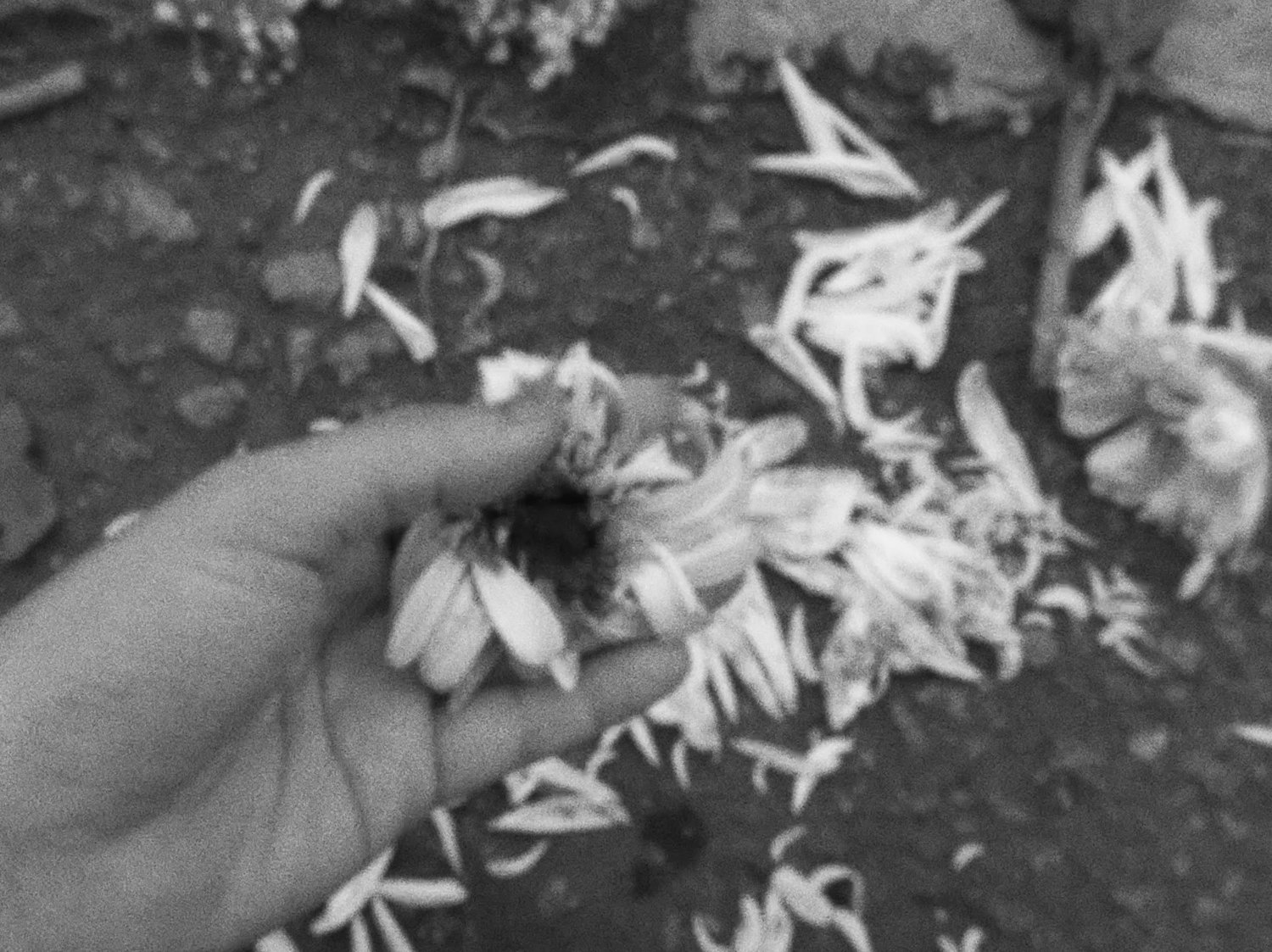
If traditional documentary lays claim to witnessing a “there” (a subject, a location, an event), then Map of Traces turns its gaze toward the not-there, the remainder. It is not simply that what we see has changed, but that it now speaks from elsewhere: an emotional, political, and collective off-site space. Rancière’s formulation of the “distribution of the sensible” is useful here, not to frame Chan Hau Chun as didactic or oppositional, but to understand her intervention in terms of reordering visibility itself. What becomes visible is not a new truth, but the weight of something already known and too fragile to state.
One of the film’s most arresting moments shows a man painting with water. His gesture leaves no lasting mark, and it may be visible only to him. The act is fleeting and intimate, not designed for an audience. But its inclusion signals something essential to Chan Hau Chun’s approach: attention to forms of persistence that do not register within conventional terms of meaning. It doesn’t perform. It remembers.
Google Street View as a technology usually tied to surveillance and spatial standardisation is here stripped of its function. It doesn’t map or clarify. Instead, it returns us to a place changed by time and by personal memory. Street View becomes a vessel for subjective drift. Not a radical act, but a quiet redirection, almost offhand, but not accidental.
Chan Hau Chun’s film is not a self-portrait, nor does it chase after interiority. Instead, it sketches a space in which the personal emerges through impersonal means: detached technologies, untraceable gestures, letters that never ask to be answered. If politics appears here, it does so without announcement, shaped by what escapes containment.
Silence
If the film has a governing strategy, it may be its handling of silence, not just the absence of sound, but a commitment to what cannot or should not be spoken. The letters to C.R. remain unanswered. The spaces between them carry just as much weight as the voice that delivers them. The camera rarely insists. It observes without concluding.
Susan Sontag, writing on Robert Bresson’s The Trial of Joan of Arc (1962), contrasts Bresson’s austere formalism with Carl Theodor Dreyer’s emotive expressiveness in The Passion of Joan of Arc (1928). For Sontag, Bresson’s silence is not inert but ethical. It refrains from dramatisation in order to preserve the dignity of suffering. Chan Hau Chun’s work channels this same restraint. Its silences don’t signify blankness. They acknowledge the limits of language and refuse to turn pain into narrative. It is a form of attention without appropriation.
This is not to suggest Chan Hau Chun is aligned strictly with Bresson’s asceticism. There are moments in Map of Traces that feel warmer, more elliptical, even fragile. But the ethical logic is related. Meaning, in this context, is not a message to be extracted but a presence to be sensed.
Chan Hau Chun avoids reconstructing C.R.’s voice. There is no reenactment, no imaginative filling-in. What we hear and see is one side of a broken exchange. Yet this incompleteness is what gives the film its shape. The decision to leave the conversation open, to resist narrative closure, becomes a structural and ethical choice. The work does not mourn in the usual sense. It accompanies. It waits.
“They see only what is visible, and mistake it for the whole.”
—after Matthew 23
Chan Hau Chun’s images move around this mistake. They suggest that to see is not necessarily to understand, and that what lies beneath or beyond the visible may be more enduring than what’s made explicit. The letters, the blurry close-up scene, the half-erased graffiti, all of it signals a commitment to remain with what does not resolve.
Map of Traces does not offer revelation. It does not stake claims. It follows the residual movements of memory, correspondence, and care. In doing so, it constructs a fragile, non-linear cartography. Nothing here is fixed. Yet within its shifting contours, the film insists, gently, and without spectacle, that not everything worth witnessing will be seen.
Ngo Chun Phoenix Tse is a Hong Kong born artist, curator and writer living and working in London. He is focusing on the historiography and hauntology of decolonisation, and the philosophy of technological image production. He also held curatorial and research positions at CVAN London, Brighton Photo Fringe, Smoking Dogs Films, Eaton HK and M+.
